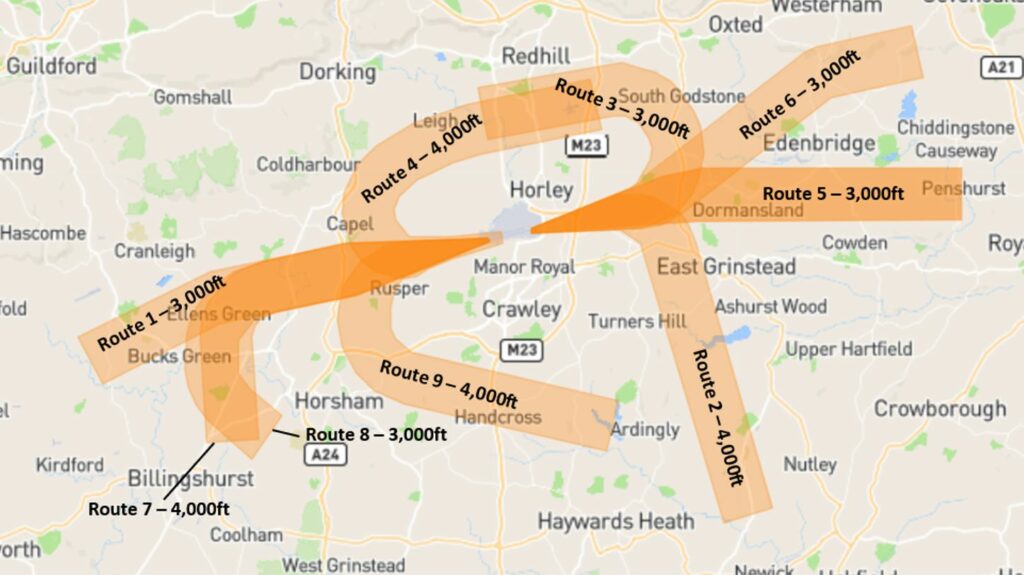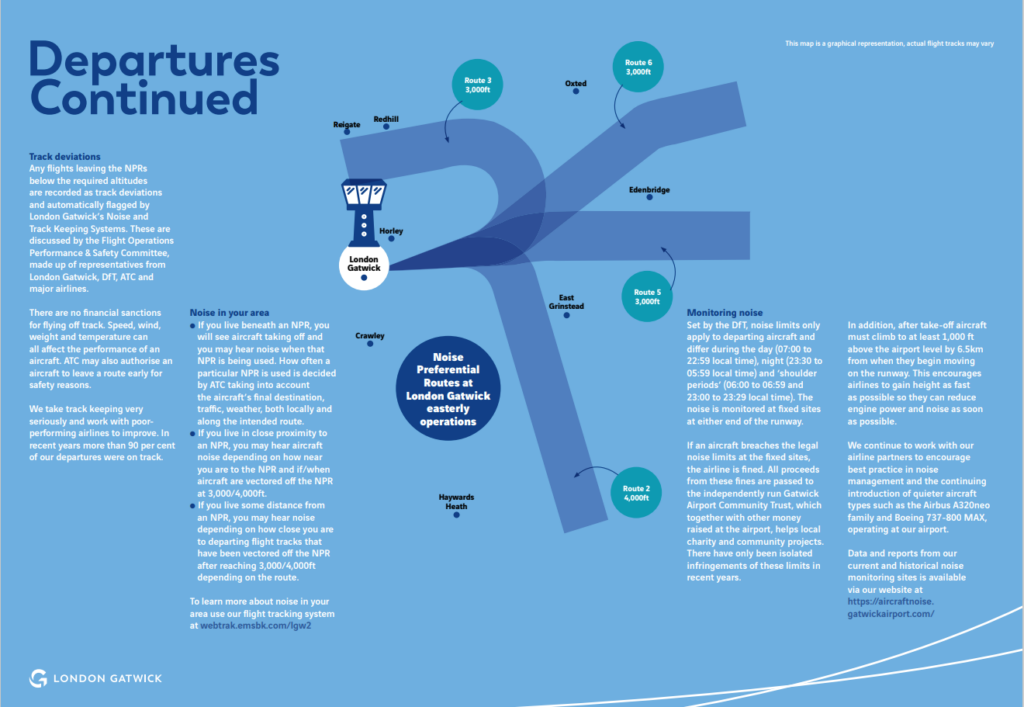Departures are required to follow specific routes which were set by the Government back in the 1960s, these routes are called Noise Preferential Routes or NPRs. These routes are shown in the images below.
Pilots and Air Traffic Control are required to maintain departures inside the Noise Preferential Route until 3,000 or 4,000ft depending on the route in question. Once this altitude is reached, Air Traffic Control are able to direct aircraft off the Noise Preferential Routes towards their destination.
Our Noise Preferential Routes or NPRs:

At certain times, Air Traffic Control may vector an aircraft outside the Noise Preferential Route to avoid adverse weather, such as thunderstorms, or other traffic in the vicinity. This may result in aircraft flying over areas they do not normally do. Our flight tracker has a rainfall layer that can show areas of intense weather than pilots often avoid.
An example of an aircraft avoiding bad weather:

Our Airspace Office reports tracks departing aircraft and reports on how may aircraft remain inside the Noise Preferential Route up to the minimum vectoring altitude. However, there are no financial sanctions against airlines that fly off track as there are many factors, including speed, wind, weight and temperature that can affect the performance of an aircraft.
You can find out more about how aircraft depart London Gatwick by watching this short video or by downloading our information pack at the bottom of this page.
Departures video:
Information pack:

 Previous
Next
Previous
Next 




